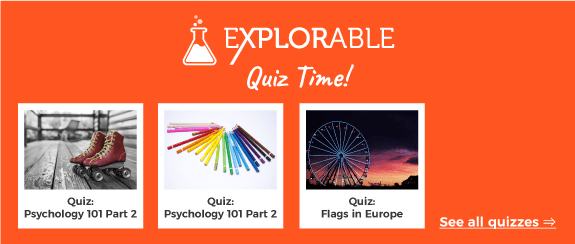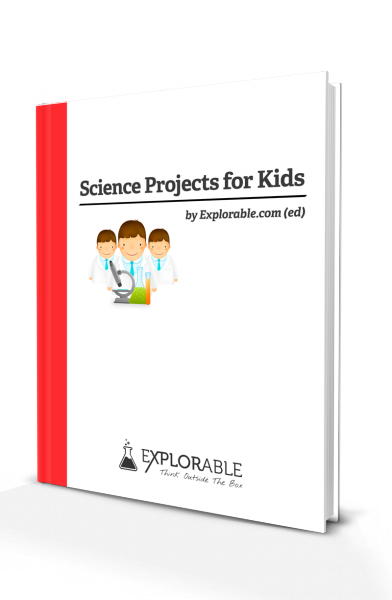
- Home >
- Lifting Ice Cube Experiment
Lifting Ice Cube Experiment
The Lifting Ice Cube Experiment is a trick that will let you lift ice cubes without getting your hands wet or making use of a spoon! You don't believe it is possible? With science, nothing is impossible!
This article is a part of the guide:
Browse Full Outline
- 1Kids' Science Projects
- 2How to Conduct Science Experiments
- 3Experiments With Food
- 4Science Experiments
- 4.1Pendulum
- 4.2Paper Towel
- 4.3Paper Airplane
- 4.4Charge a Light Bulb
- 4.5Lifting Ice Cube
- 4.6Magic Egg
- 4.7Magic Jumping Coin
- 4.8Invisible Ink
- 4.9Making-a-Rainbow
- 4.10Oil Spill
- 4.11Balloon Rocket Car
- 4.12Build an Electromagnet
- 4.13Create a Heat Detector
- 4.14Creating a Volcano
- 4.15Home-Made Glue
- 4.16Home-Made Stethoscope
- 4.17Magic Balloon
- 4.18Make a Matchbox Guitar
- 4.19Make Your Own Slime
- 5Historic Experiments
The Lifting Ice Cube experiment demonstrates the melting and freezing properties of water, which results to another property of matter called adherence. Adherence refers to close physical attachment or union of two objects. To further understand this phenomenon, let us do an experiment!

Materials
In this experiment, you will need the following materials:
- Glass of water
- Ice cubes
- String
- Salt
Procedure
Drop an ice cube in the glass of water. Take the string and dangle the end of it on the ice cube, and then keep it still.
While the string is dangled down onto the ice cube, sprinkle a bit of salt on the ice cube. Set aside for a few minutes. After some time, try to lift the string and observe what happens to the ice cube.
Discussion
In the Lifting Ice Cube experiment, notice that adding salt onto the ice cube caused it to attach itself to the string, allowing you to lift it out of the glass just with the use of the string; like fishing! Read on to find out how this happened.
Before we explain how this happened, let us talk about the freezing point of water first, and the melting point of ice. The freezing point of water and the melting point of ice under normal conditions is 0°C or 32°F.
How it Happens
When you placed the ice cube in the glass of water, two processes started to occur: the ice started melting into the water and the water started to freeze. Because the two processes have been happening simultaneously, we can say that the ice and the water are in dynamic equilibrium. Here, the rate of freezing and the rate of melting is the same. As ice melts, the ice molecules begin to escape into the water. On the other hand, when the water freezes, its molecules are captured on the ice surface. With this happening at the same time, it is safe to say that there are no changes created in either the ice or the water. This state of equilibrium shall stay as long as the water keeps its temperature of 0°C (32°F).
When we sprinkle salt on to the ice cube, the state of equilibrium is disrupted. The salt molecules dissolve and join the water molecules thus changing the water's rate of freezing. The rate of melting is now much faster than freezing hence causing the ice to melt. However, to be able to restore equilibrium, the water's freezing point drops causing the ice to freeze out of the salt water. The salt starts to crystallize and ice refreezes around the string. This causes the ice cube to stick to the ends of the thread enabling you to pick it up just by lifting the string!
Explorable.com (Nov 3, 2011). Lifting Ice Cube Experiment. Retrieved Dec 31, 2025 from Explorable.com: https://explorable.com/lifting-ice-cube-experiment
You Are Allowed To Copy The Text
The text in this article is licensed under the Creative Commons-License Attribution 4.0 International (CC BY 4.0).
This means you're free to copy, share and adapt any parts (or all) of the text in the article, as long as you give appropriate credit and provide a link/reference to this page.
That is it. You don't need our permission to copy the article; just include a link/reference back to this page. You can use it freely (with some kind of link), and we're also okay with people reprinting in publications like books, blogs, newsletters, course-material, papers, wikipedia and presentations (with clear attribution).
Get all these articles in 1 guide
Want the full version to study at home, take to school or just scribble on?
Whether you are an academic novice, or you simply want to brush up your skills, this book will take your academic writing skills to the next level.
Download electronic versions:
- Epub for mobiles and tablets
- For Kindle here
- PDF version here
This article is a part of the guide:
Browse Full Outline
- 1Kids' Science Projects
- 2How to Conduct Science Experiments
- 3Experiments With Food
- 4Science Experiments
- 4.1Pendulum
- 4.2Paper Towel
- 4.3Paper Airplane
- 4.4Charge a Light Bulb
- 4.5Lifting Ice Cube
- 4.6Magic Egg
- 4.7Magic Jumping Coin
- 4.8Invisible Ink
- 4.9Making-a-Rainbow
- 4.10Oil Spill
- 4.11Balloon Rocket Car
- 4.12Build an Electromagnet
- 4.13Create a Heat Detector
- 4.14Creating a Volcano
- 4.15Home-Made Glue
- 4.16Home-Made Stethoscope
- 4.17Magic Balloon
- 4.18Make a Matchbox Guitar
- 4.19Make Your Own Slime
- 5Historic Experiments
Footer bottom




